
The Path
“The Path,” at Lake Louise, Banff National Park, is one of those iconic lines in North America that I have known about for a long time. The climbing on the beautiful 45 meter face looked excellent and the backdrop of Lake Louise provided a setting hard to beat. It’s become a test for those who want to push themselves on gear, but seemed ultimately safe. All ingredients for a classic rock climb.
It was bolted back in the 80s, but had not seen an ascent until Sonnie Totter got to it in 2007. After inspecting the route, he found that it could be lead safely on gear, although with considerable distance between pieces at times. So he chopped the bolts and climbed the line naturally, rating it 5.14a R.
I hadn’t thought much about attempting The Path until I made plans to spend four weeks in the Canadian Rockies to attempt some of the classic hard multipitch routes. After giving it more thought, I realized that getting on The Path should be a priority. It had all of those good ingredients and it also seemed like it would suit my strengths well.
After climbing Castles in the Sky (5.14a, 7 pitches) on Castle Mountain and The Shining Uncut (5.14a, 9 pitches) on Mt. Louis, in only two days of work each, I needed a break to recover from putting in multiple long days in the mountains. Mike Kerzhner and I planned to spend a few casual days checking out Acephale, Cougar Canyon, and Lake Louise, some of the best crags in the area. Going to Lake Louise, our intention was to just toprope The Path a couple times, figure out how much of a project it would be and come back to it later.
We arrived at Lake Louise at 7am on a holiday weekend, just in time to get one of the last parking spots. After getting some coffee at the hotel, we went straight to The Path and set up a toprope. The first half of The Path is one of the most popular 5.11s in the area, so we had to stake it out early. On my first toprope attempt I was surprised to find that it didn’t feel that bad. The gear seemed good and it climbed really well. Maybe it wouldn’t be as much as a project as we thought. I decided that I’d try to see how far I could get on my second toprope attempt and ended up getting to the top without falling! I didn’t expect to give it an attempt on lead that day, but that was the next step! Mike and I talked through the gear and were pretty satisfied with our selection. It was time to go for it!
I was nervous and scared though, and unsure of my beta at the first crux, peeled off. The gear held and I pulled back on. I took another fall at the redpoint crux on a Black Diamond red X4, one of the smallest cams available. It held too. I needed to get all the jitters out and get used to the feeling of being runout over small gear. After taking some falls, I knew I was safe. I thought I had one more attempt in me.
Our friend Ycbrand Nusse jugged up a nearby line to take photos and I started off on my second lead attempt, fourth attempt that day. I felt relaxed but a bit tired. At the first crux I struggled to get some gear in, but stayed calm and made it through. I recovered well at the next rest, confident that I would at least make it to the redpoint crux. The redpoint crux was not that hard for me though—I just needed to be confident and execute. Iron cross to the bad crimp, bring the left foot out, cross to the slippery bad crimp, and grab the good hold. I did exactly that. I enjoyed the last bit of runout climbing to the anchors in disbelief. I had just sent The Path in a day!
If The Path really is 5.14, it would be my first 5.14 in a day. I don’t think it’s physical difficulties are 5.14, maybe just 5.13d, but if the mental element is factored in, maybe it deserves 5.14a.
I was not even halfway through our four week trip and had ticked three of my four Canadian Rockies life list routes. I thought if I was lucky, I’d send just one or two! This trip has been a dream. I’ve been truly in my element!
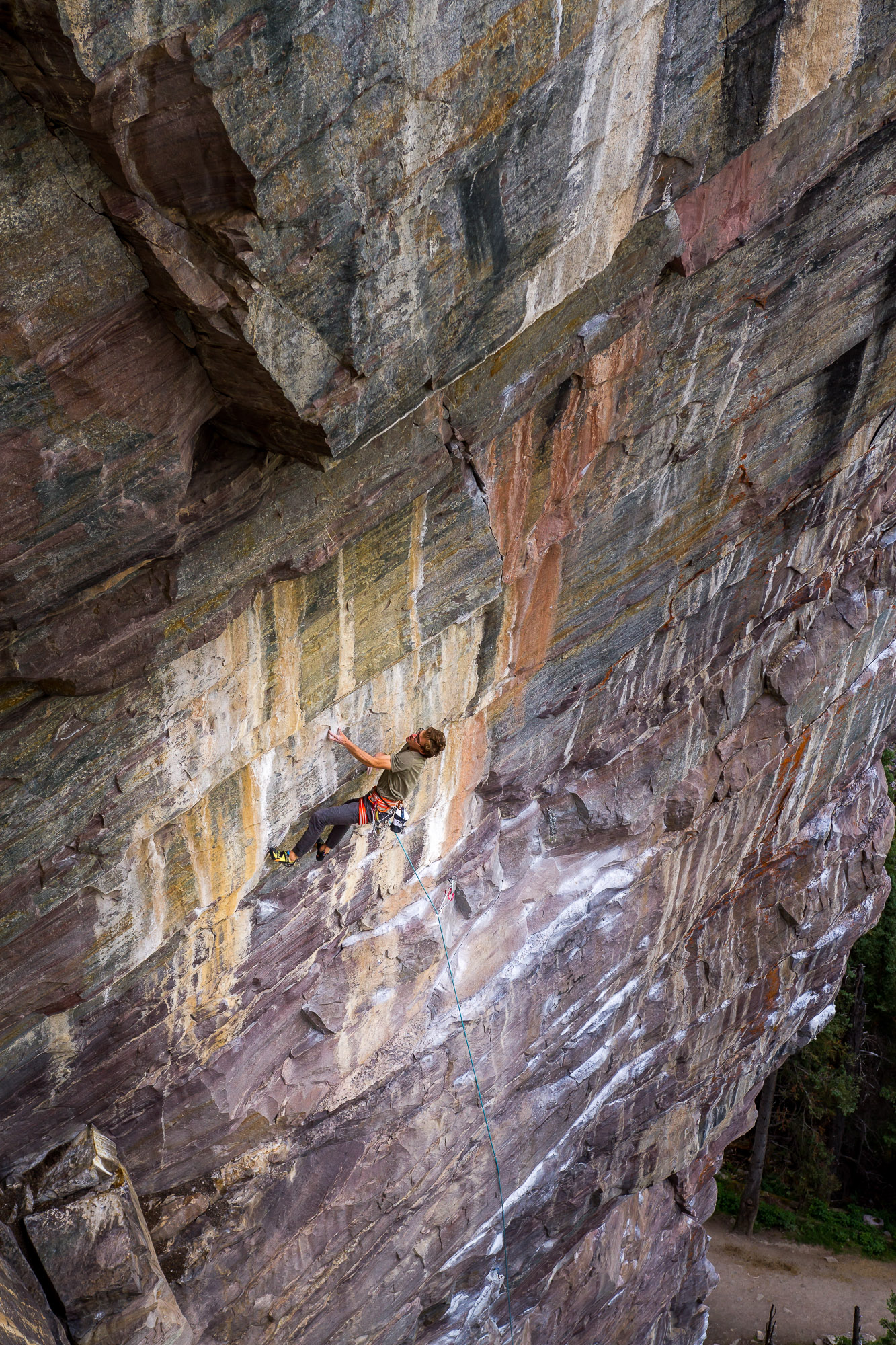

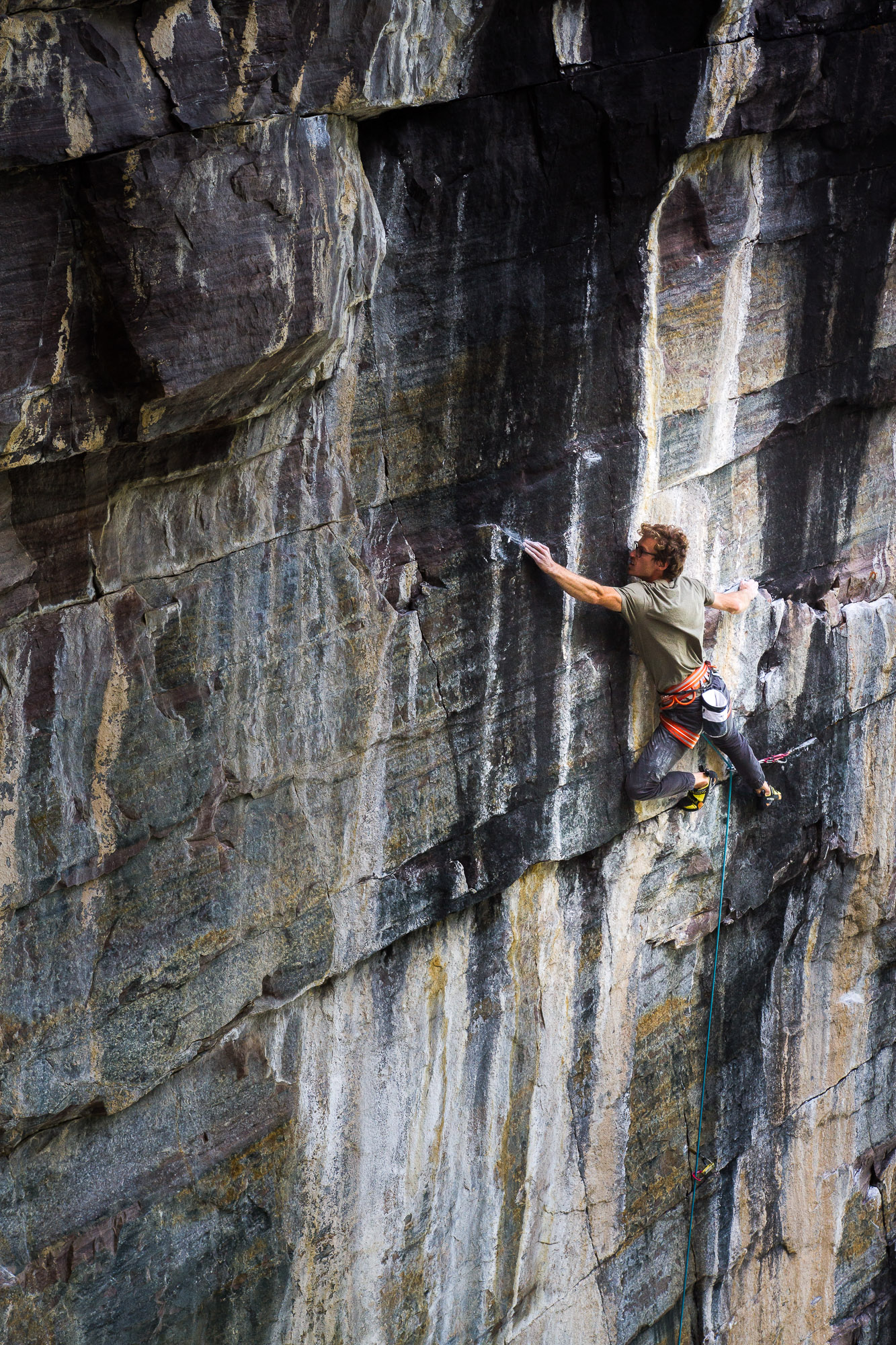
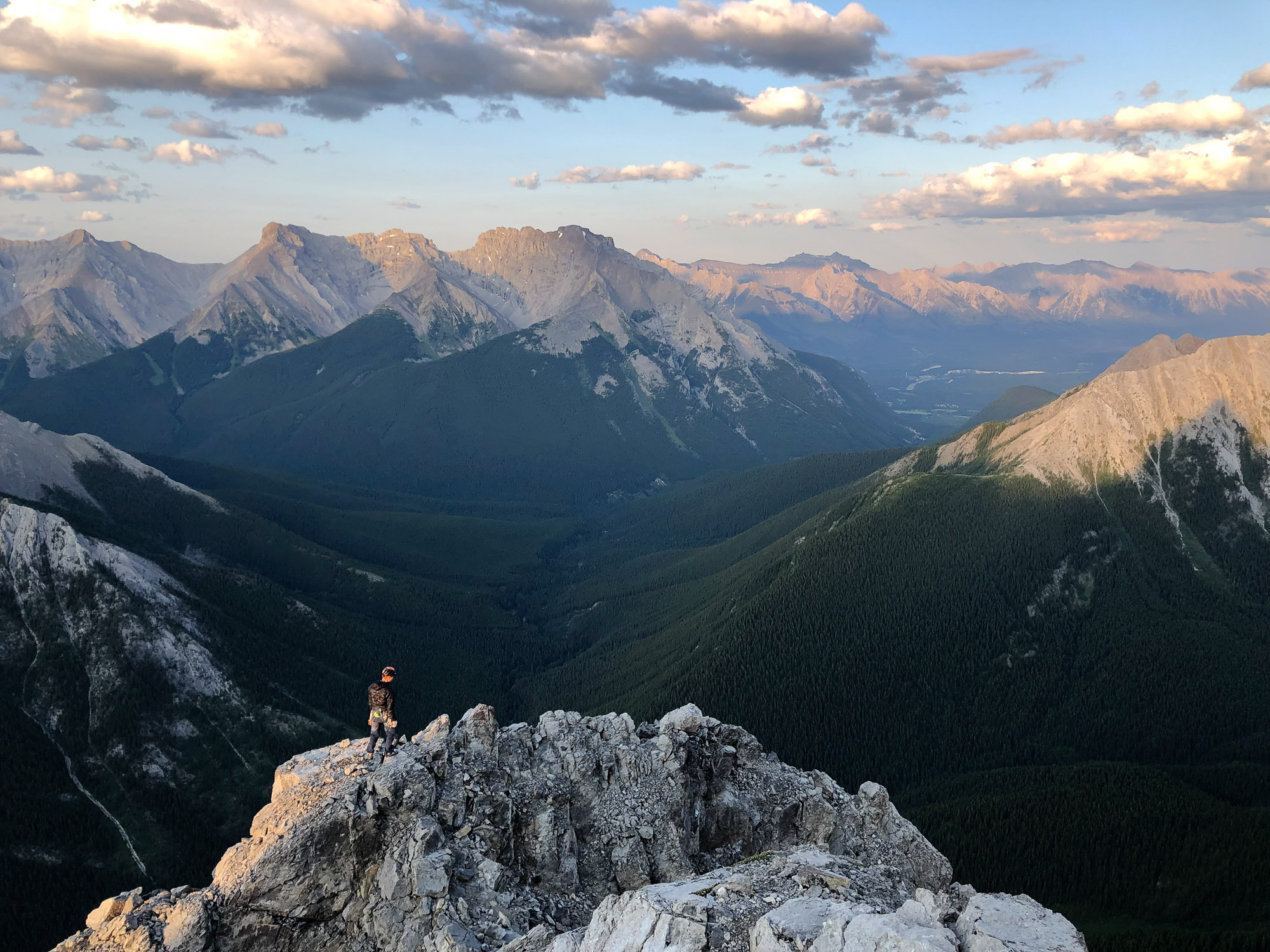
Mike descended from the summit to start the rappels.
The Shining Uncut
Wow. What a route. More than I expected. The Shining Uncut will live on as one of the best climbs of my life. It had all the elements of a great climb. A big beautiful mountain. A straight line up the center of the biggest face. Challenging and sustained climbing. Good to the very end.
One day of rest after Castles in the Sky and Mike Kerzhner and I went straight to the next project: The Shining Uncut on Mt. Louis. In 2011, Tommy Caldwell and Sonnie Trotter, in an epic effort, put up The Shining ground up, bolting on-lead. They returned to free it and called it 5.13+. In 2017, Sonnie came back and linked three of the hardest pitches in order to skip the hanging belays. The mega 90m ledge-to-ledge pitch variation he called “The Shining Uncut,” 5.14a, and would be a third piece to his “Canadian Alpine Trilogy.” Mike and I had our eyes on the trilogy, though we didn’t feel like we needed to repeat it in exactly the same way. The three routes just looked like quality hard routes in the mountains. So far I had made quick work of Castles in the Sky (5.14a). Sonnie’s trilogy version of Castles in the Sky, “War Hammer,” involved adding a bunch of low fifth to 5.11 climbing to take it to a summit, something we weren’t inspired to try. I was curious to try the Uncut version of The Shining though. It seemed like an appropriate challenge, and it’s usually nice to go ledge-to-ledge, one of the main reasons being that it’s more comfortable for the belayer!
We spent our first day working on the 90 meter “5.14a” crux pitch on a fixed line. It seemed close and Mike and I returned after a rest day optimistic about sending. On our first attempts, we both fell at about the same point—at about 75 meters! That’s a lot of climbing to do only just to fall! He messed up his sequence and I missed a good foot. Even though it would be a long shot, we thought it could go second try if every move was executed perfectly. On my second try, I climbed through some rain lower on the pitch, hoping to not slip on a wet foothold. The rain thankfully stopped and I fought from teetering off the crux. When I made it to the anchors, I couldn’t believe it! Trying to stand on tiny feet and hold on to small holds with almost 90 meters of rope weight was quite the mental challenge. I thought I was off multiple times. Sometimes you just keep holding on! The feeling of pushing that hard in that situation high on Mt. Louis was powerful! It was a perfect challenge.
After sending, I made two 45 meter rappels back down to the belay to give Mike another lead attempt. His foot slipped low and he decided to try the unlinked original version of The Shining. I jumared up to the hanging belay below the 5.13 crux pitch and Mike sent!
We were both sending a version of the route. At that point it was almost 6pm. We had started hiking 12 hours ago. And we had some serious climbing to go. A 5.12 pitch, a long 12+, a rappel behind the Diamond flake, and a long 11+ to the summit was all. But we were low on daylight and water—we had dropped a bottle and spilled another in our haul bag! We were onsighting at this point and really did not want to have to retry a pitch. Climbing 5.12 in the mountains is not like climbing 5.12 at the crag! After I lead the first 5.12, Mike made a heroic lead up the 50 meter 12+ pitch to the top of the flake. This pitch was steep and follows an amazing crack that splits the top of the headwall. At the top of the Diamond, which is actually a massive flake separated from the mountain (see photos), we made a wild rappel into a chasm between the Diamond and Mt. Louis. One fun long 5.11+ pitch out of the ice box (literally!) took us to a belay just below the summit.
The summit views at dusk were wonderful. Almost no wind. Perfect visibility.
We finished the rappels in the light, down-scrambled by headlamp and hiked back to the car by 1am. What a day! A classic mountain adventure.More photos below…
Beta
Linking the first three pitches on the Diamond for the “Uncut” requires some logistics. I’m not sure how Sonnie Trotter did it. Sasha DiGiulian and Mike Doyle both climbed it with two 80s, ditching one partway up. But to climb it with an 80, you have to belay 10 meters above the main ledge on a smaller ledge, and even then the climber supposedly can barely clip the anchors. I climbed it with a 90m rope (the 8.5mm Beal Opera), and if you can get your hands on one, I think it’s the way (just don’t take too many whips on it!!). The belayer could comfortably stay on the main ledge with a 90. I did not climb with two ropes but chose to thoughtfully extend close to half of the draws. Many single extensions, a few double and one triple extension on the P2 anchor straightened it out pretty well. I wish I had an accurate draw count, but because most of the draws were already hanging (someone was working it already), I can only guess. You probably want 20 long draws and maybe another 15 regular. Honestly just bring all the long draws you can summon…you’ll be psyched. I was worried that trying the Uncut would be more annoying than fun, but I felt like it was a cool challenge. The rope drag with all the long draws was acceptable and dealing with mainly rope weight added an exciting element. Plus the hanging belay before the thirdpitch sucks. But ultimately it’s about what’s inspiring to you.
Follow approach beta for the Kain Route and continue past it to the prominent gulley. Scramble up the right side of the gully, staying left. You should see single bolt rappels regularly. The last bit is steeper and can be climbed/simuled in a single pitch with a few cams to the belay at the base of the Diamond.
You can rappel the route from the summit with a tag line. This is probably easier/faster/simpler then taking the normal descent for Mt. Louis. Use your tag line to pull yourself back across the chasm between the flake and the mountain. Thank you Sonnie Trotter and Tommy Caldwell for this amazing route put up in the best style!
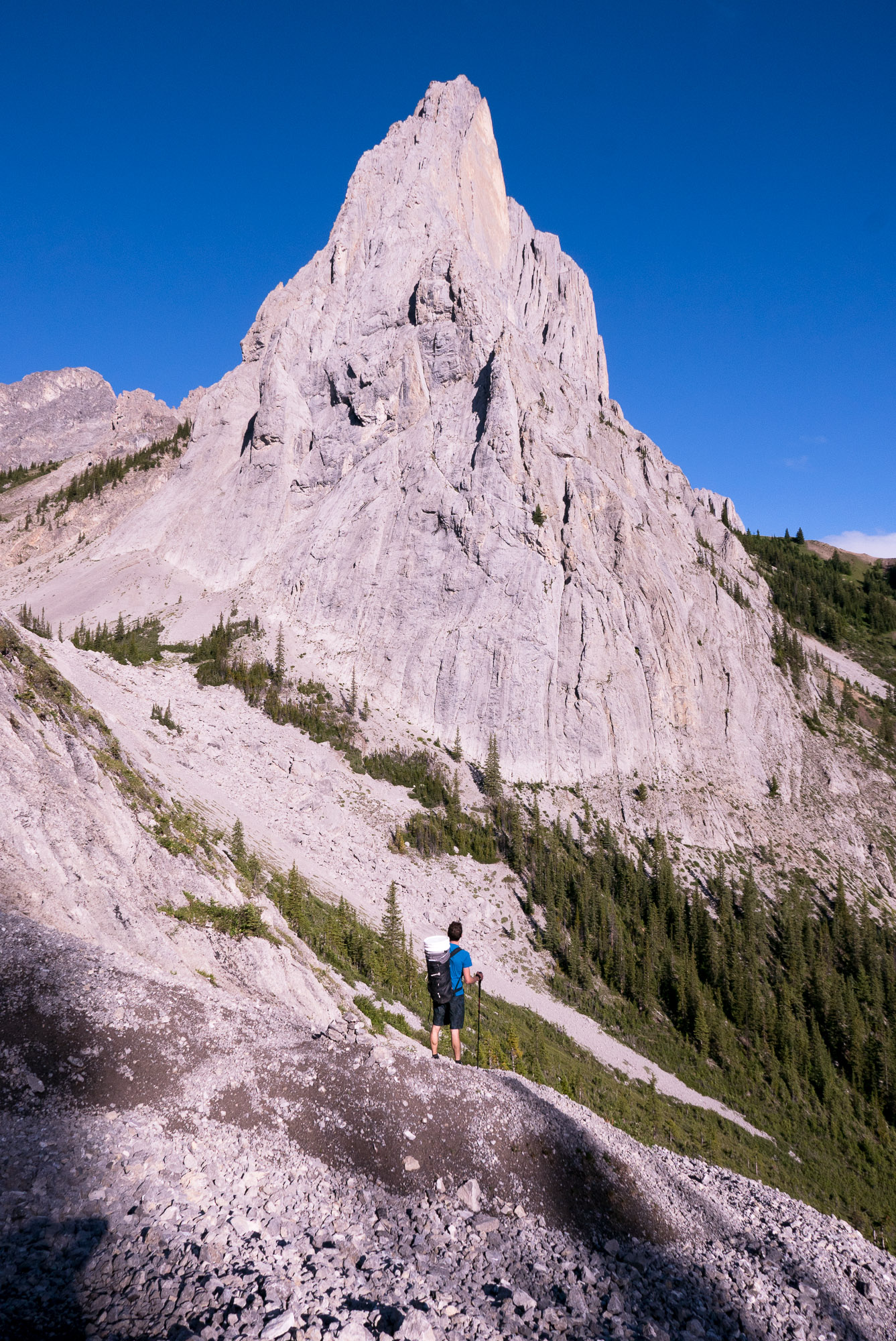
Mike approaching Mt. Louis the first day with a bucket to stash our rope—we weren’t sure how long this project would take!
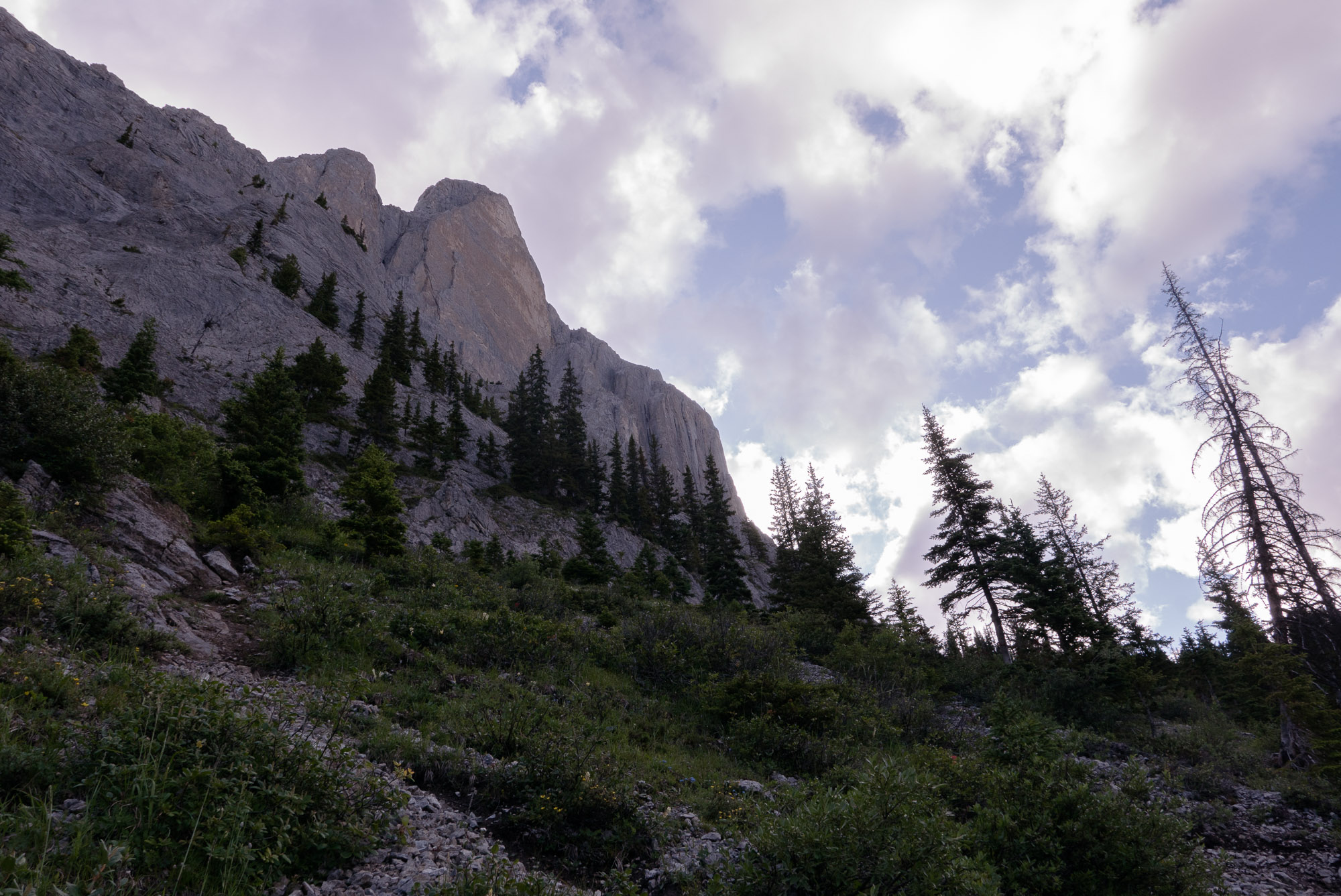
Looking up at the Diamond on the approach.
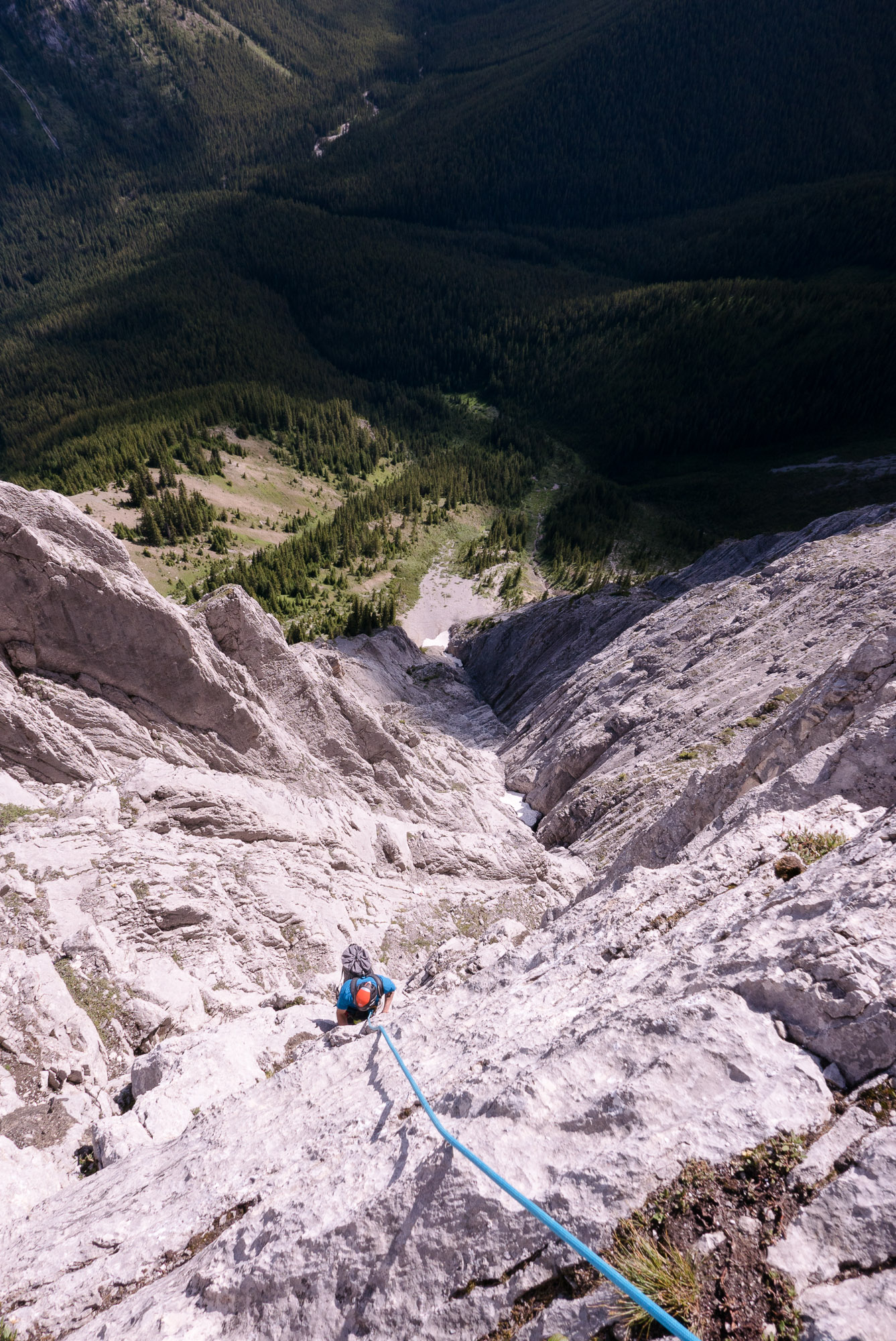
Mike following the last bit of climbing before the Diamond headwall.
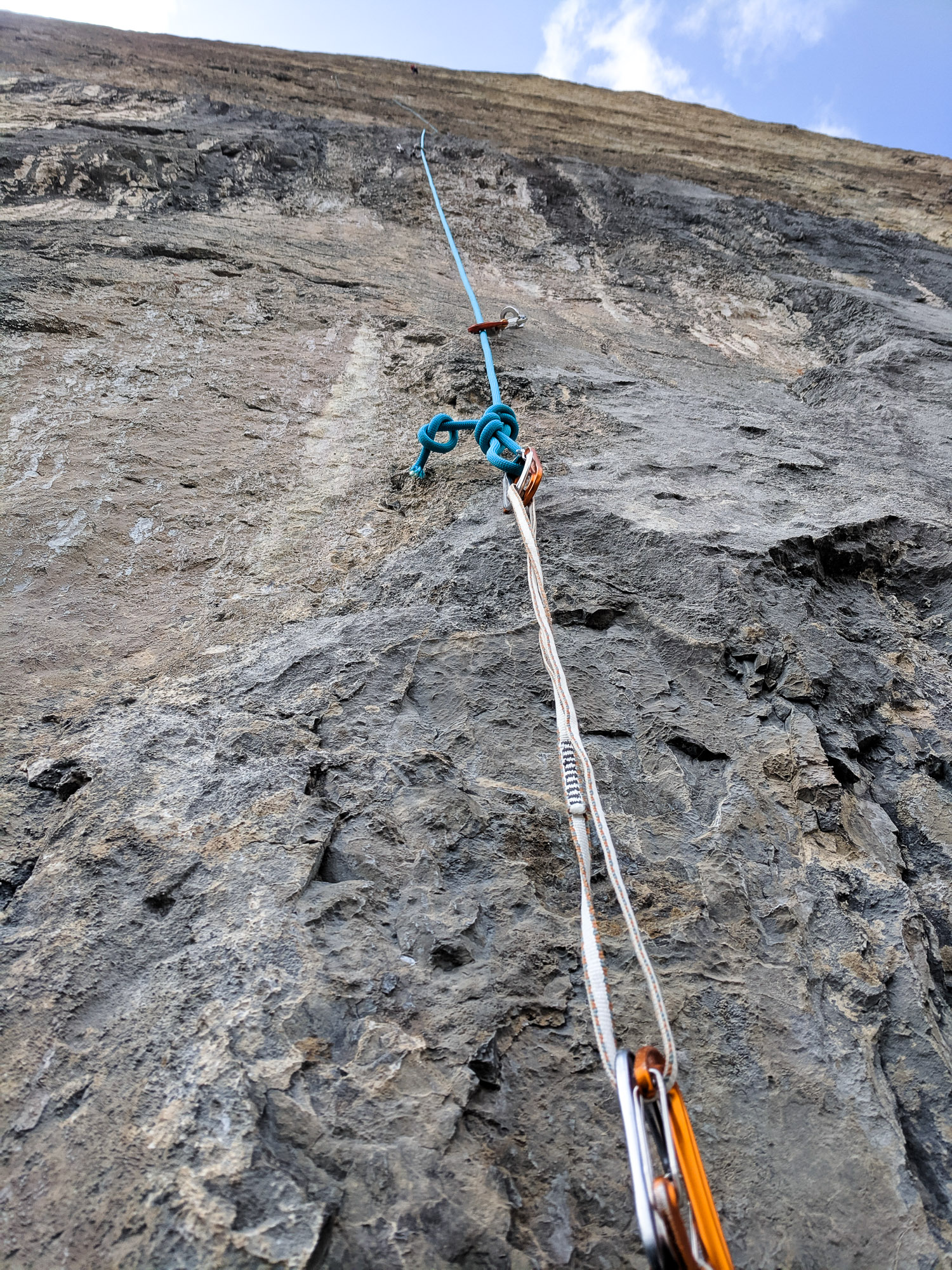
I quested up the first 3 headwall pitches in one rope length the first day. Because we hadn’t extended the draws yet, the rope drag was heinous. Mike wasn’t sure I’d make it so he extended the rope. Turns out we had just enough rope with the 90m.
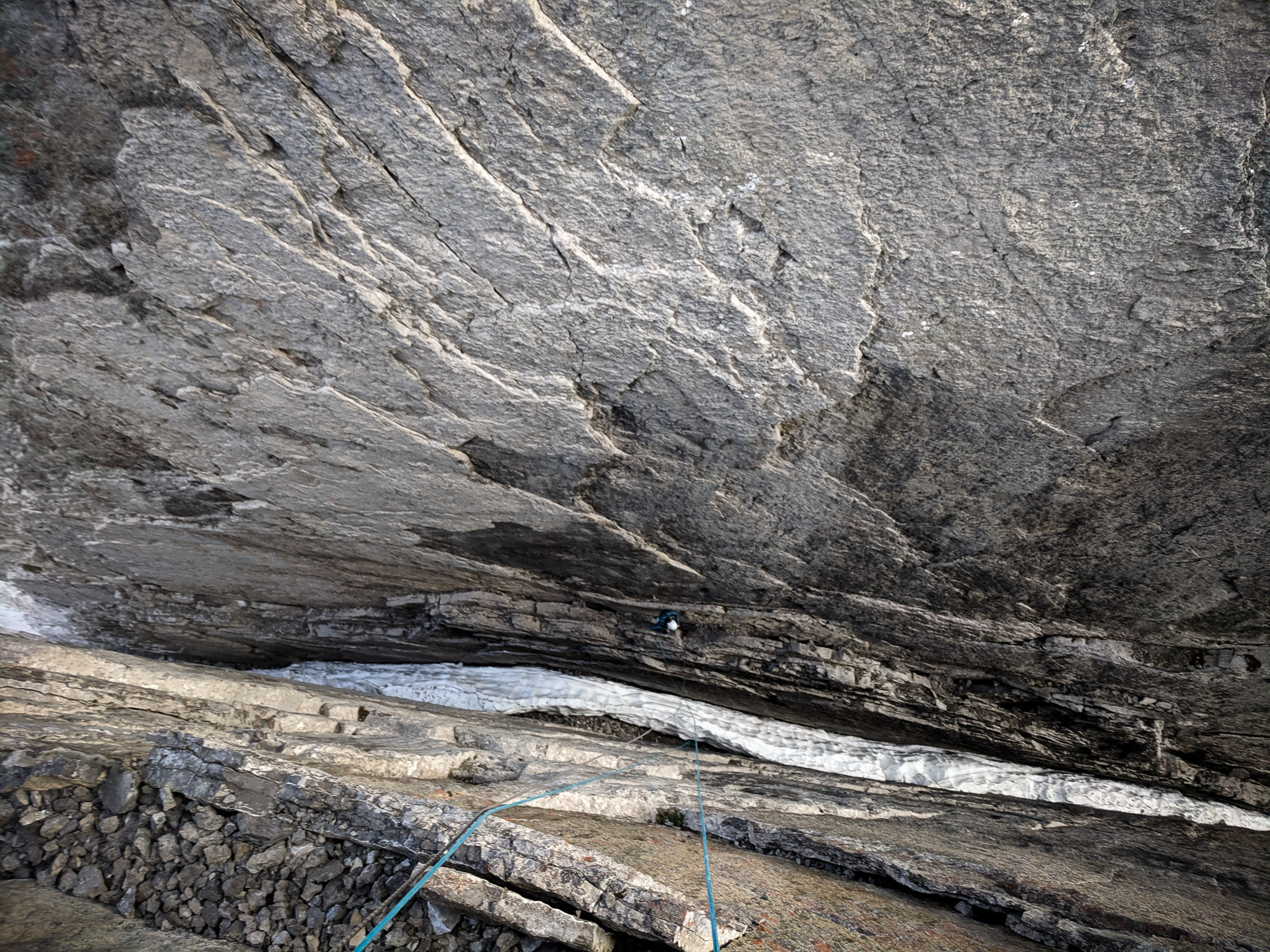
Mike looking down at me in the chasm between the Diamond flake and the mountain.
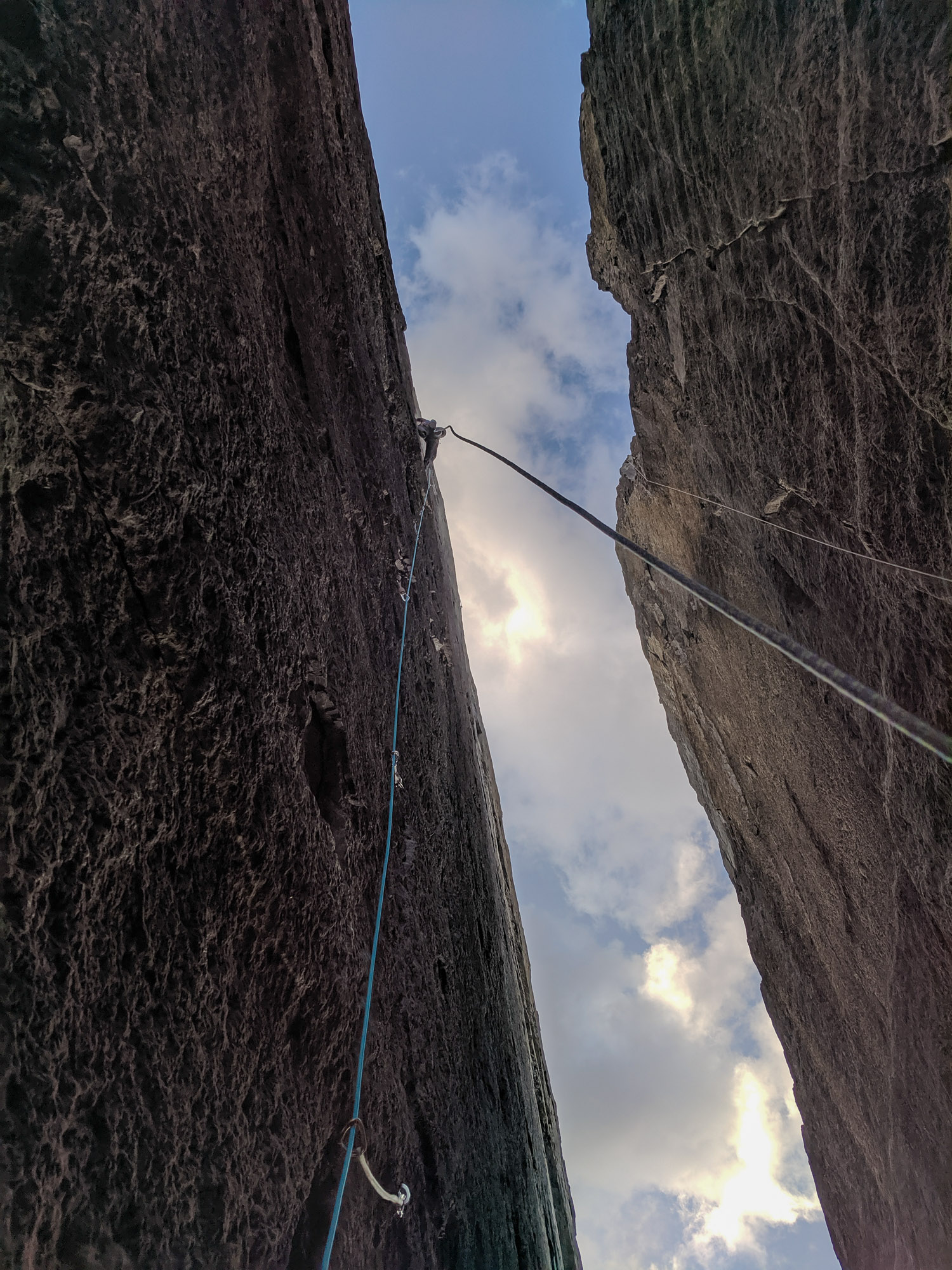
Me climbing out the other side of the chasm.
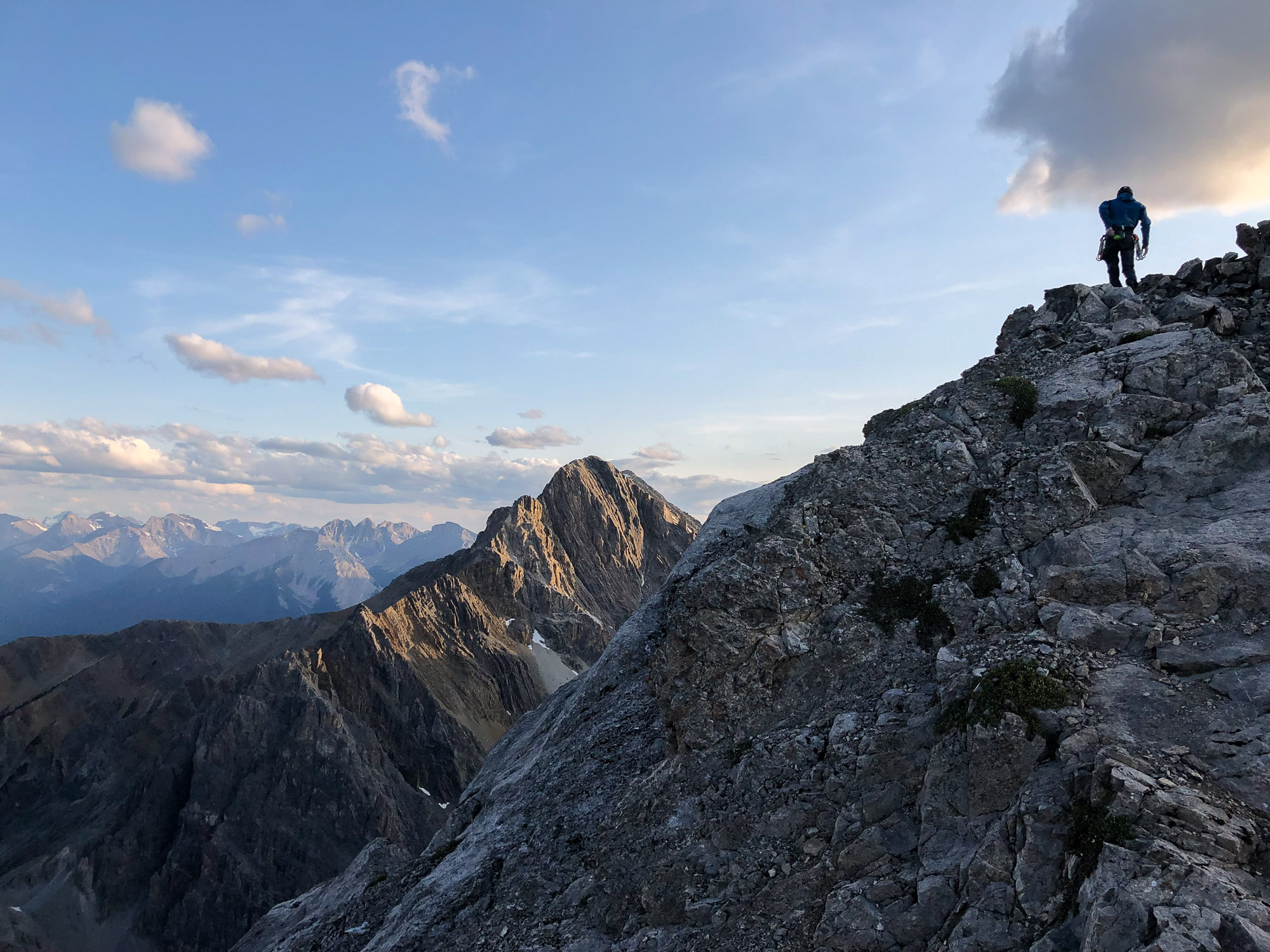
Mike near the summit of Mt. Louis.
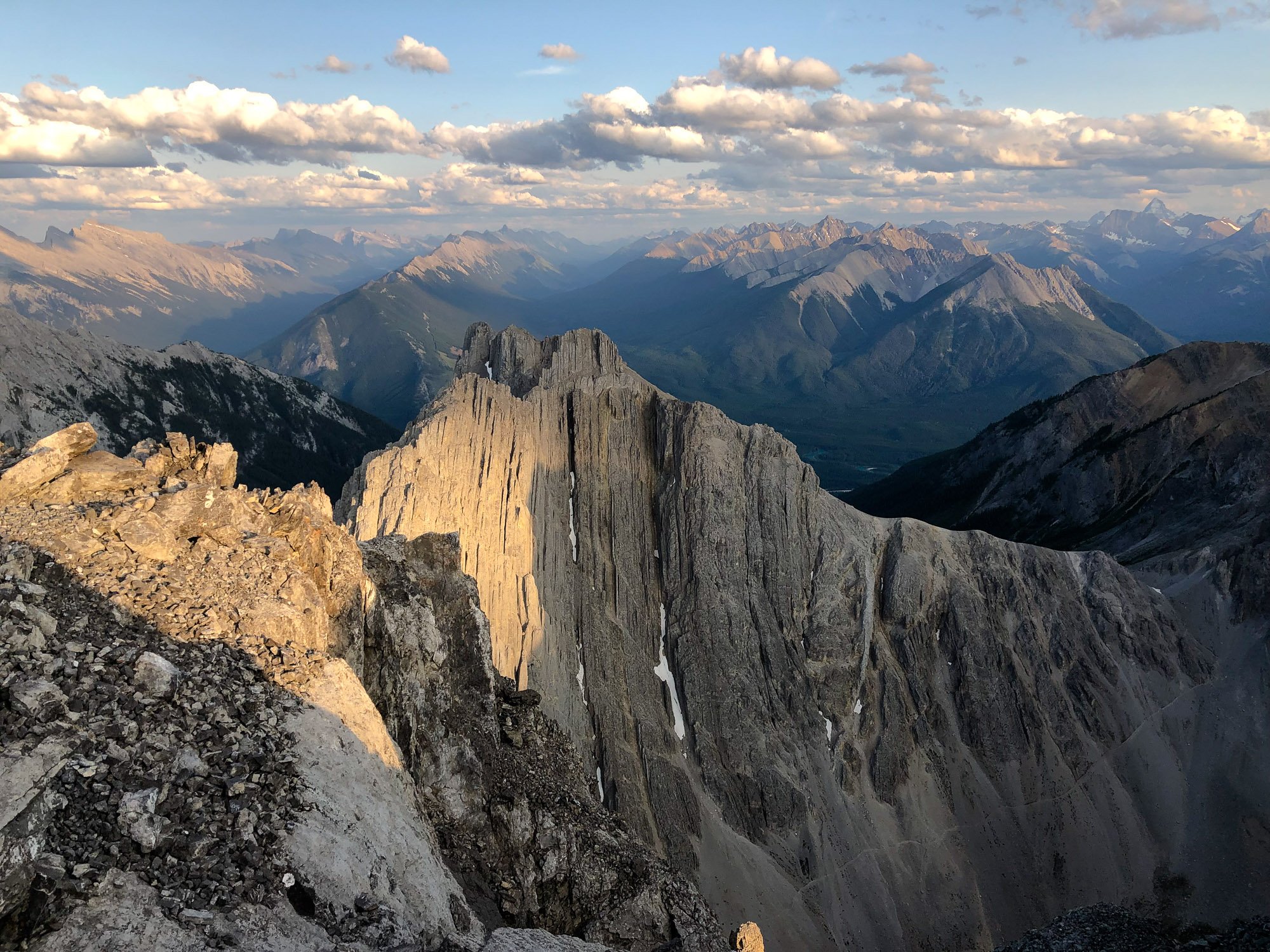
Summit views.
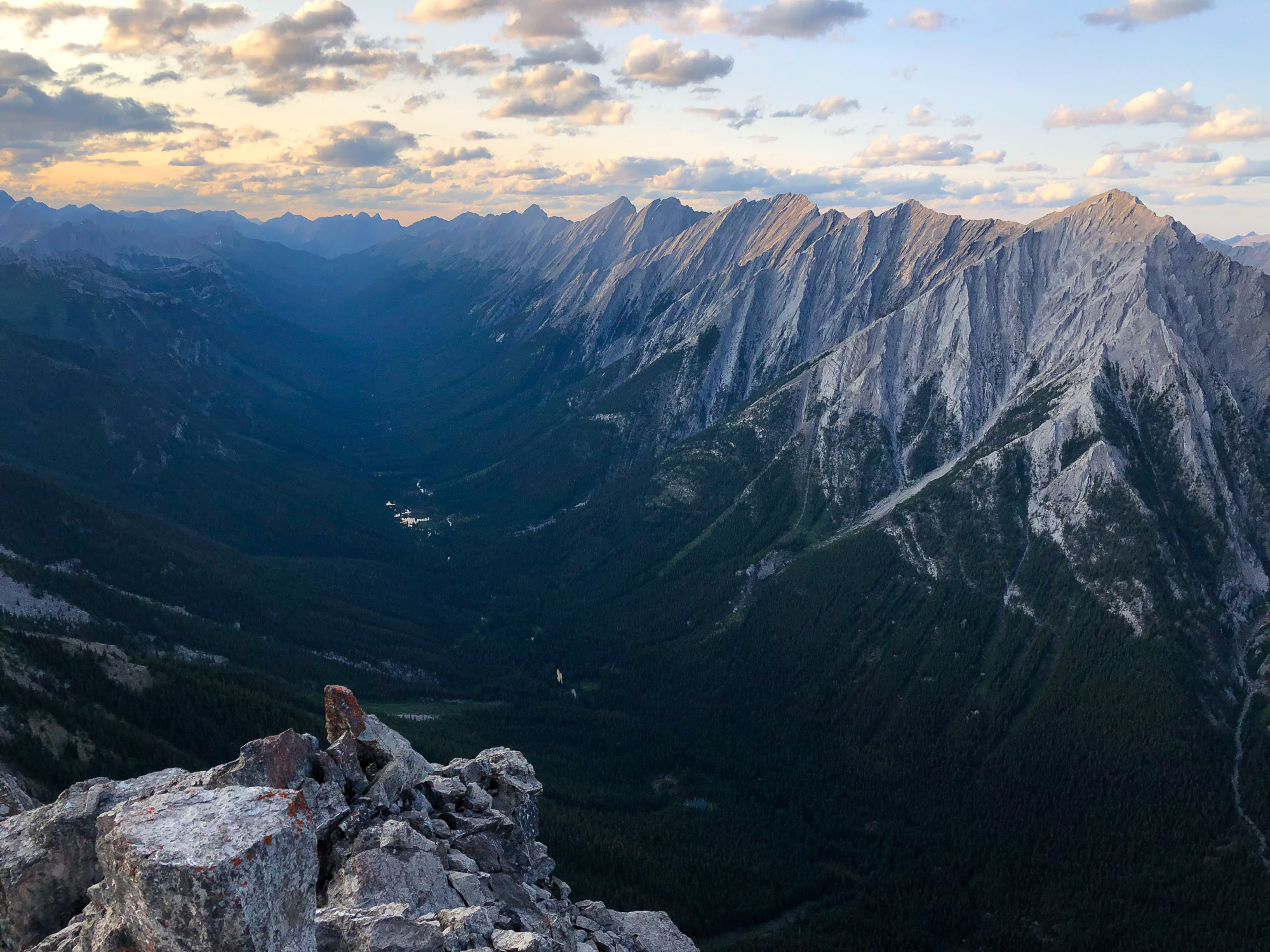
More summit views.
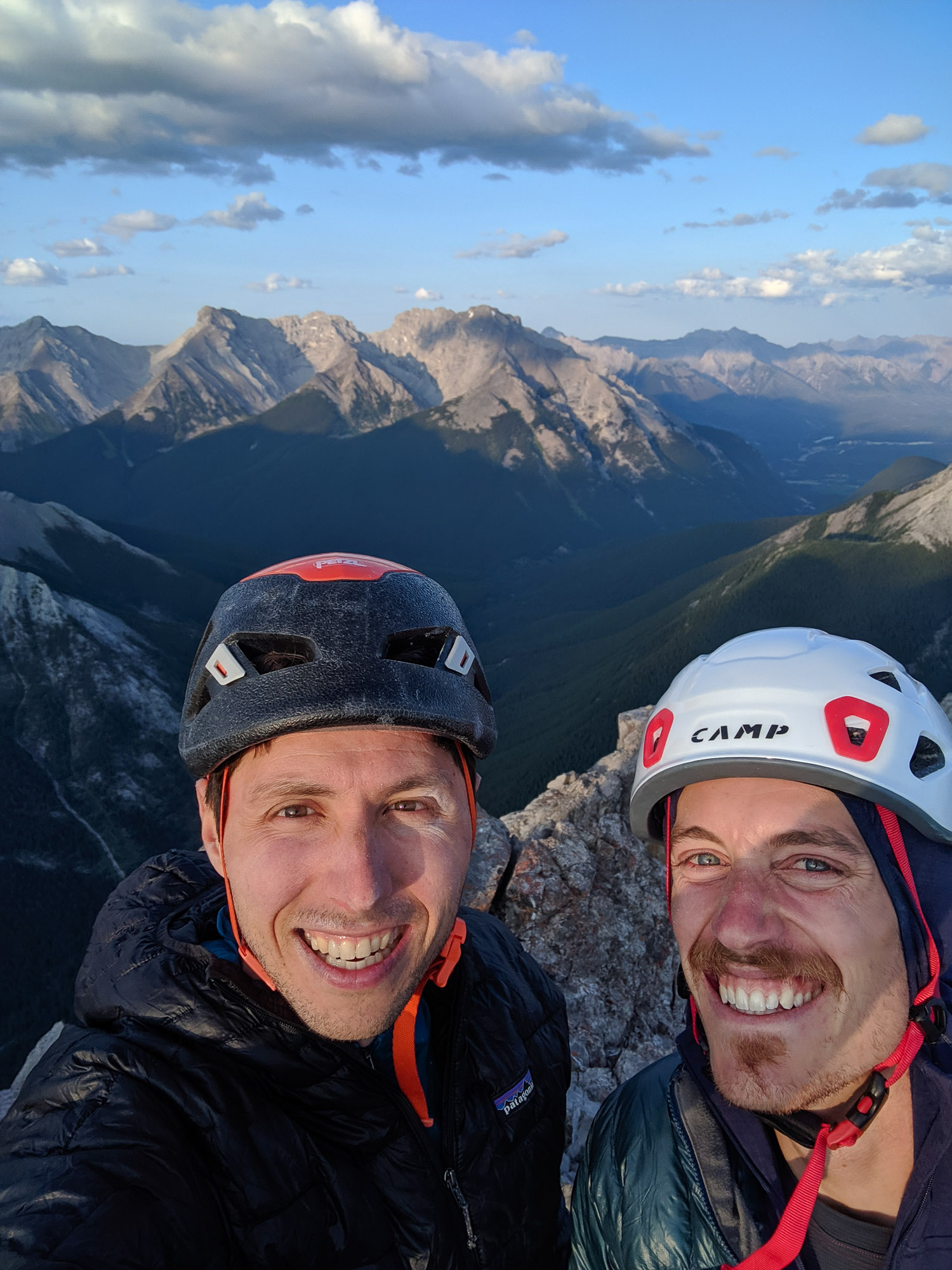
The obligatory selfie.
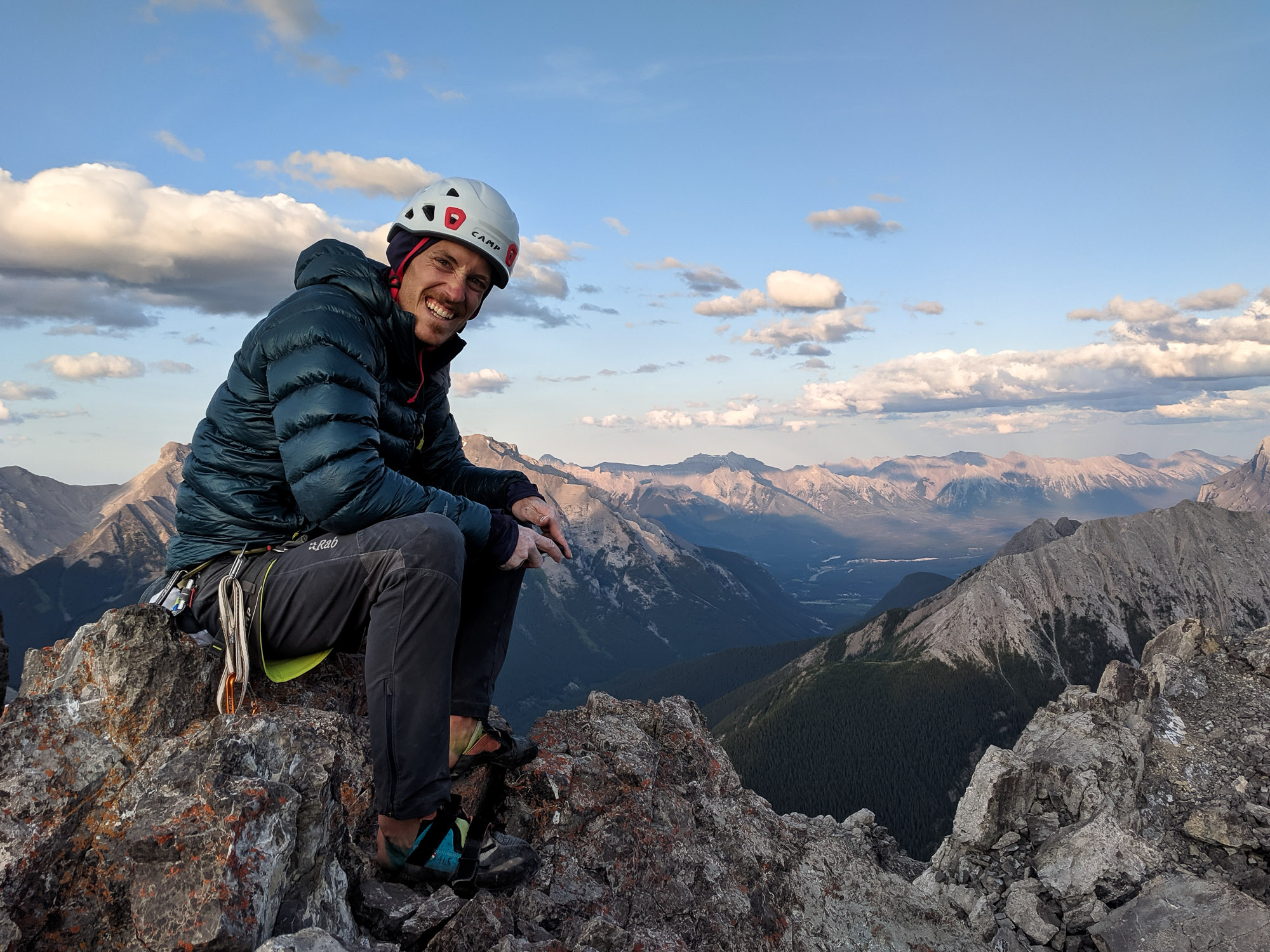
My goofy grin.
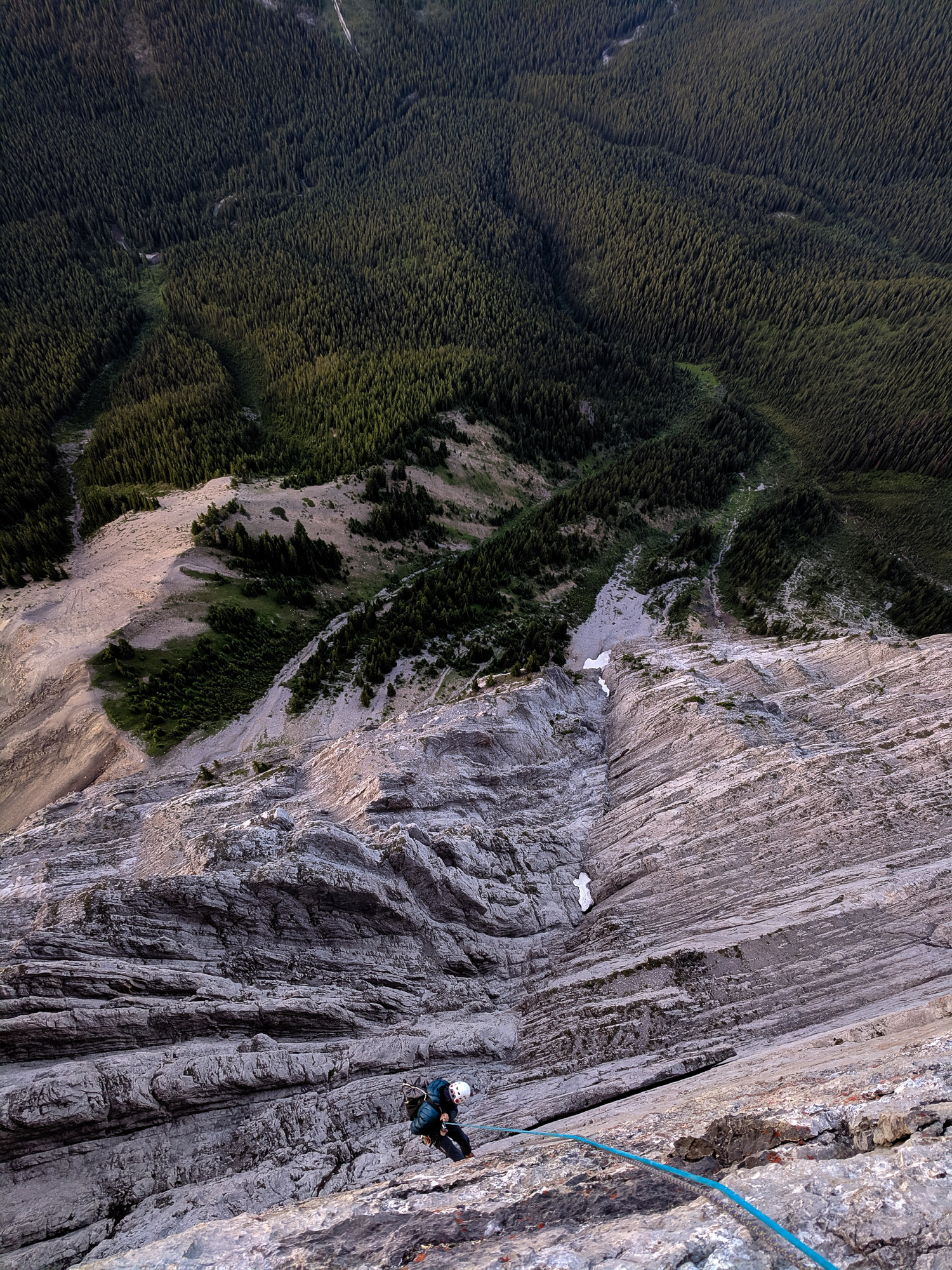
Me starting our second rappel down the headwall.

Mike down scrambling in the dark.
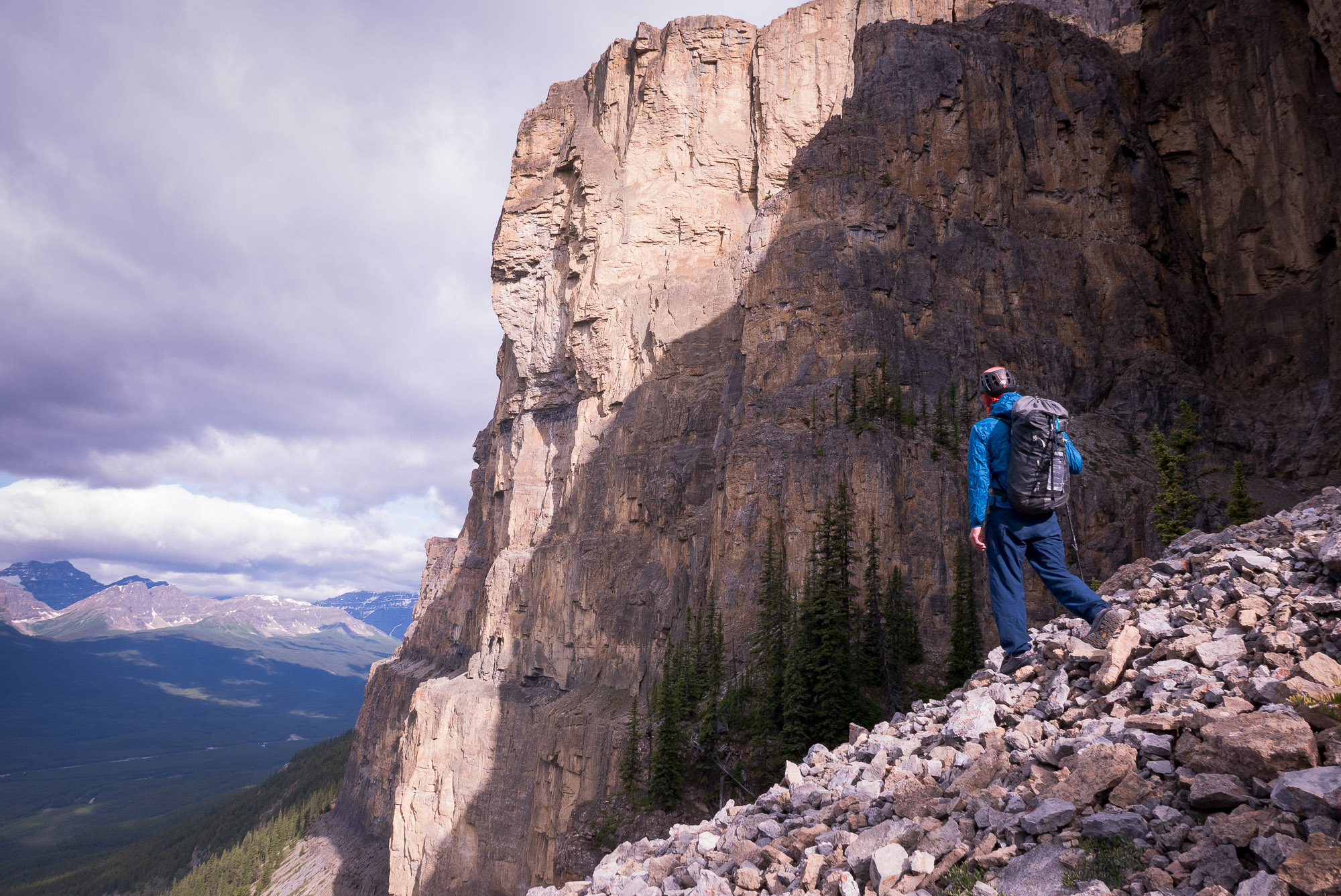
Castles in the Sky
Last week I climbed Sonnie Trotter’s “Castles in the Sky,” a 5-pitch route on the middle tier of Castle Mountain. The crux pith is an epic 50 meter 5.14a, culminating on a beautiful sharp arête. I can’t emphasize enough how absurd the position is—you won’t be able to tell from the photos. And despite the still crumbling rock, the climbing is mostly solid, varied, and quite enjoyable. It’s easily one of my favorite pitches.
Mike Kerzhner and I spent our first two climbing days in Canmore on Castles. Our 4-week trip was inspired mainly to come try this route. Sure, there seemed to be some great sport climbing at now well-known crags like Acephale and Planet X and other great looking multipitch routes like “The Shining” and “Blue Jeans,” but Castles in the Sky was the one route I was most psyched to try. It’s been on a mental ticklist for a few years now.
I knew it’d be possible to send quickly, but I was prepared to spend most of the trip working on it. On our first day I made a pretty good first attempt, making it to the first real crux, but was flash pumped. The approach pitches were only 5.10 and I was pretty poorly warmed up. I wasn’t able to recover from my first attempt and fell lower on my second, still feeling pumped and fatigued from the altitude and the hike. It was a little demoralizing how hard everything felt. I worked out the moves well-enough though and just hoped that with some rest and a proper warm-up I’d feel much better.
We had a narrow good weather window of two days between rain so Mike and I decide to return the next day despite our need for rest. We figured we could keep dialing in the moves and gain more endurance by putting more attempts on this almost 200 foot pitch.
The next morning we woke up tired but still psyched to get back on the route. The 40 minute drive from our rented place in Canmore to the trailhead is quite pleasant with beautiful huge mountains rising right off the road. The Canadian Rockies is quite the magical place. The 2-hour hike is also quite nice, mostly on a wide tail rising at a gentle angle. We could walk side-by-side and carry on a good conversation. To gain the base of the route, you have to traverse a sloping scree ledge for 15 minutes—slightly terrifying but also an entertaining last step on the approach. After two 5.10 pitches, which we linked, you get to a perfect small ledge where you can comfortably hang out on all day, enjoying the sun and the view. The process of working on this route was amazing and we were absolutely loving it. We barely cared about sending—hanging out on the ledge and trading attempts on a thoroughly enjoyable pitch in such an outstanding place was enough!
On the second day, after warming up on the 5.12+ first half of the crux pitch, I gave the full pitch another shot, mainly hoping to make it further than I did on my first attempt. After smoothly climbing through the lower parts of the route to the last good rest 15 meters from the top, I tried to mentally reset for the hard climbing. After resting till my feet hurt, I started off on the exposed arête and climbed through difficult section after difficult section and to my amazement made it to an OK undercling rest after the hardest climbing. It was still a little tricky to the top and I worried about a foot slipping or a hold breaking. Trying to rest on the edge of this overhanging arête 1000 feet in the air with the wind loudly whipping at my jacket was one of the wildest moments of my life. The rope weight made the last few moves to the anchor absurdly pumpy, but I clawed my way up.
Sending this dream route 3rd try over two days was a huge surprise, but evidence of how much I’ve grown as a climber the last few years. I’ve made it a priority to continually challenge my knowledge of climbing movement through my routesetting, training, and climbing outside, and I think this has led to having the intuition and mental strength to climb such a hard route quickly even in a fatigued state. I owe some thanks to having mentors like Travis Kemp and Tonde Katiyo in my life.
After sending, Mike lowered me and he gave it another go on lead. He made it through the first hard crux but didn’t have it in him to pull over a small roof, the second crux. He waited for me at the top of the pitch and I jumared up a fixed line—the most exposed and free-hanging jumar I’ve ever done (terrifying!!)—and we climbed the last two pitches to the top of the wall. The route ends at the top of a wall in the middle tier of Castle Mountain. Some people walk across a football field-sized ledge and continue up low fifth class to a summit, but we opted to call it a day and rap the route. The crux pitch is the main event for this one, and quite a good one at that. Thank you Sonnie Trotter for such a brilliant route!
Beta
A 60m fixed line is necessary for working the crux pitch comfortably. Usually people climb the pitch with a grigri or ATC (lighter) and rap the fixed line to get down. There are midway anchors but the climb is so overhung and left trending that it would be very hard/annoying to get back to them to re-thread. We had a 90m 8.5mm Beal Opera—the lightest single rope available—and we could lower a few bolts from the top using the fixed line to pull ourselves back to the belay. That way we didn’t have to carry a device to rap with. You definitely don’t need a 90m rope but it was nice and if you’re planning on trying The Shining Uncut on Mt. Louis, you will need it.
The first tow 5.10 pitches can be linked with 19 draws. The crux pitch takes around 35 draws and is closely bolted, especially at the top where it’s hard. The last couple pitches don’t take more than 15 draws. Bring a handful of long draws for the start of the crux pitch.
To gain the ledge to start the route, look up beta for the approach to Eisenhower Tower. There is a good stream where you can fill up water 1 and a quarter hours into the approach. Shortly after the stream, a climber’s trail leaves the main trail to the left. After 25-30min of steep trail, you’ll hit a 15 foot rocky step. After the step, head left to gain the scree ledge. If you hit another rocky step, you’ve gone too far. Traverse the ledge gingerly until you arrive at the base of the route. The prominent arête of the curx pitch is extremely obvious.
The route finishes on the right side of the mountain and you can easily walk off the top if you want. We just rappelled.
A comment on grade: this one might be granted a bit extra because of elements like rope drag and position. If the route was at the crag and rope weight wasn’t an issue, it would probably be just 5.13d. Have fun!
Archive
2023
Dreefee and Crystal Dawn
Rubbernecker
2022
Long's Peak Diamond
Seattle Design Festival Interview
Seeing Circuits: an Interview with the Bouldering Project
2020
Vanishing Point 2.0: A Classic Route Modernized
Interview with Steven Dimmitt
Training Using Circuits
Cuba
2019
Dark Side of Liberty
The Bugaboos
Blue Jeans Direct: The End of the Canadian Rockies Ticklist
The Path
The Shining Uncut
Castles in the Sky
Scarface
Index's First 5.14
Turkey
2018
Patagonia
2017
Dark Side of the Valley
Vanishing Point
Winter Climbing
First Route in the Alaska Range
New York Gully